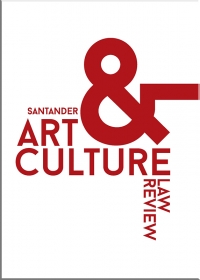Museums, Dance, and the Safeguarding of Intangible Cultural Heritage: “Events of Practice” – A New Strategy for Museums?
Museums, Dance, and the Safeguarding of Intangible Cultural Heritage: “Events of Practice” – A New Strategy for Museums?
Author(s): Tone Erlien, Egil BakkaSubject(s): Theatre, Dance, Performing Arts, Museology & Heritage Studies, Customs / Folklore, Public Law, Cultural Anthropology / Ethnology
Published by: Wydawnictwo Uniwersytetu Jagiellońskiego
Keywords: safeguarding; museum; intangible cultural heritage; cultural politics; dance traditions;
Summary/Abstract: This article proposes to view the present actions regarding cultural heritage through the prism of two different paradigms: the paradigm of preservation and the paradigm of safeguarding. The question posed is whether and how these two paradigms can work together and support each other. The article is written as a dialogue between Tone Erlien, initiator, curator, and project manager of the project “Interactive dance dissemination”, who takes the perspective of the museums; and Egil Bakka, professor emeritus serving on UNESCO’s Evaluation Body for the 2003 Convention, who takes the perspective of this normative instrument. The Norwegian project “Interactive dance dissemination” is used as a point of departure for our discussion, and as an example of how the Convention has inspired and influenced the work of museums. We find that museums are signalling a strong wish to include the safeguarding of intangible cultural heritage (ICH) in their portfolios, even if they still mainly work within the preservation paradigm. As museums normally combine many approaches in their work with immaterial culture, many of them may not belong to a full-fledged “safeguarding” of ICH. In this article we posit that exhibitions and performances certainly can support safeguarding in important ways, but that full safeguarding projects would need to include the practitioners. The New Museum wave has reached out towards safeguarding, and the dance project described in this article elaborated several solutions to allow museums to embrace safeguarding, emphasizing the method we call “events of practice”. A basic challenge is whether museum staff are willing to give practitioners the lead, and if so, whether the practitioners themselves are able to take the lead.
Journal: Santander Art and Culture Law Review
- Issue Year: 3/2017
- Issue No: 2
- Page Range: 135-156
- Page Count: 22
- Language: English

